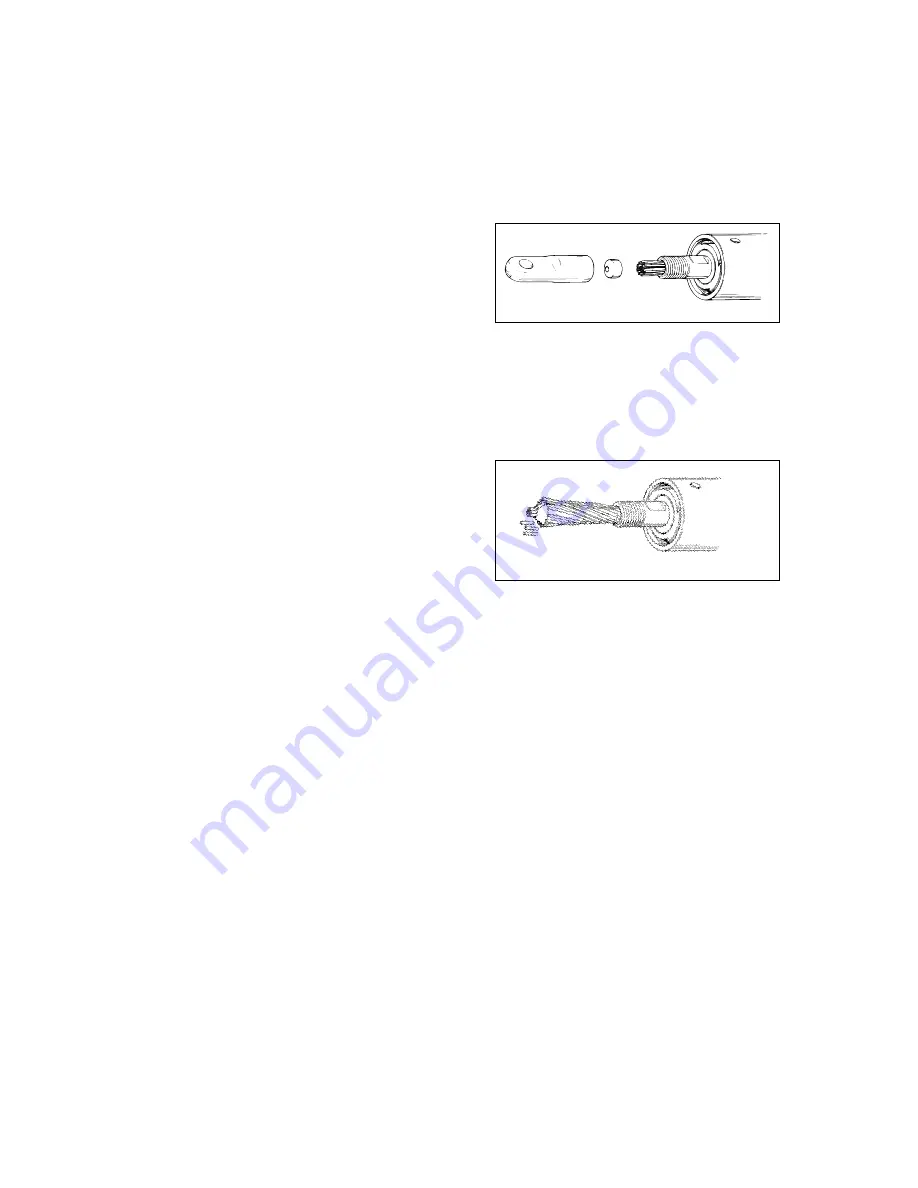
48
To shorten the wire or to remove it.
For a better understanding of the following instructions, we recommend that you first read the section
on assembly on chap. 4.1.
1. Remove the toggles from the wire terminal.
2. Remove the eye part (or rigging screw) of the
terminal. The thread is held by a locking adhesive.
If it cannot be turned,heat the eye to approx.
100°C (212°F) and unscrew the eye while hot.
3. Remove the former from the bottom of the eye part.
4. Screw on the eye part fully, and then loosen 2-3 turns.
5. Hit the top of the eye,
hard
, a couple of times along the line of the forestay.
Use a heavy hammer. The wire will then leave its coned seat. Remove the eye.
Note: The stay must not be fixed anywhere during this operation.
6. Cut all wire strands protruding outside the wedge
at the bend approx. 5 mm (3/16”) of the strands.
See fig. 17.4.a
7. Prize the wedge apart slightly by inserting a small
screwdriver into the slot and turning. Tap on the
screwdriver so that the wedge slides off the wire.
8. Twist the wire strands into the correct position
around the core (counter-clockwise when seen from underneath).
9. The wire can now be pulled out of the luff extrusion.
Fig. 17.4.a
Fig. 17.4.b
Prior to reassembly of the forestay:
Check that the shape of the wedge was not damaged on dismantling. If so, replace it.
Cut the wire core flush with the outer strands. Remove any burrs with a file.
The decrease in forestay length which results has very little effect on the mast rake. A decrease of 5 mm
(3/16”)
in forestay length causes the masthead to move forward 11 mm
(7/16”)
on a 10600 mm
(34’9”)
forestay.
The decrease in length can also be compensated for by an increase in stay tension of 5% of the wire’s
breaking load compared with before. (However, permanent tension must not exceed 20% of the breaking
load of the wire). If this reduction in wire length is unacceptable, the total decrease can be made equal to
a toggle length. The reduced measurement is compensated for by fitting an eye/fork toggle (see table
3.3.3). The luff extrusion and possibly the sail also should be shortened accordingly.
1 7 . 4 Fo r e s t a y



















